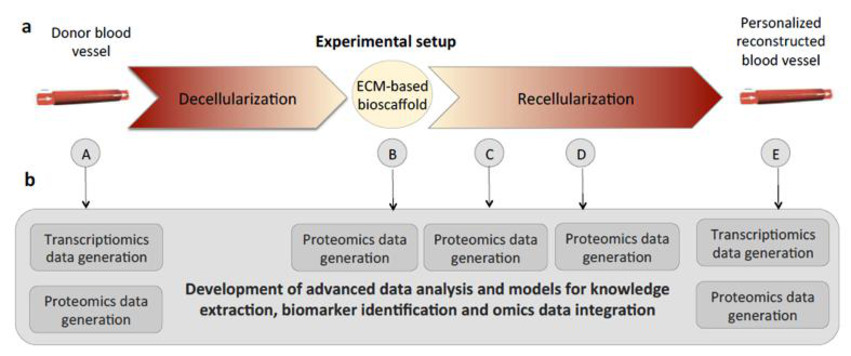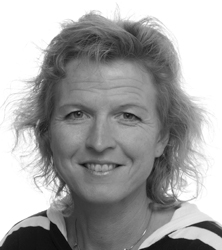Nidal Ghosheh
School of Bioscience
The Transplant Tissue Engineering (TransTissuE) is a collaboration project between the University of Skövde, VERIGRAFT and XVIVO. We develop methods and strategies for optimization of the production process of personalized tissue-engineered vascular transplants.
These transplants are manufactured by the removal of the cellular content, decellularization (DC), from donor blood vessels while preserving the structural and functional molecular units of the remaining extracellular matrix (ECM). A recellularization (RC) procedure is then applied to repopulate the ECM with autologous cells and other components from blood samples from the recipient patient (Figure 1).This strategy allows the modulation of the immunological response system and limits implant rejection. However, knowledge about how this critical modulation is controlled is still lacking. By applying extensive data analysis on large-scale omics datasets, the project aims to implement a modeling approach to reveal how the risk of implant rejection could be reduced.

Figure 1. Overview of the decellularization and the reconditioning/ recellularization of the ECM-based bioscaffolds. After isolation of the donor blood vessel and the decellularization, the cell-free scaffold is reconditioned/recellularized by peripheral whole blood collected from the recipient, and subsequently the personalized graft is implanted into the recipient. Stars indicate collection of samples for generation of omics data.
The project will analyze comprehensive proteomics and transcriptomics datasets from the different stages during the DC and RC procedures of blood vessels (Figure 2). Advanced large-scale data mining will be applied to these complex omics datasets, including machine learning techniques to investigate the mechanisms related to the modified immunological response and reduction in transplant rejection. Furthermore, biomarkers will be identified and selected for development of decision support systems for quality control of the RC and DC processes.

Figure 2: a. Overview of the personalized tissue-engineering procedure showing five time points (A-E) at which samples will be collected. A. Sampling of the donor blood vessel; B. Sampling of the ECM-based bioscaffold obtained following the DC procedure; C. Sampling at day one of the RC protocol; D. Sampling at day 4 during the RC procedure; E. Sampling of the final product. b. Overview of the omics datasets that will be generated at each of the five time points and further processed for data integration and biomarker identification.
The results of this project are anticipated to contribute to the development of personalized transplants and to improved treatments for patients with damaged blood vessels.

